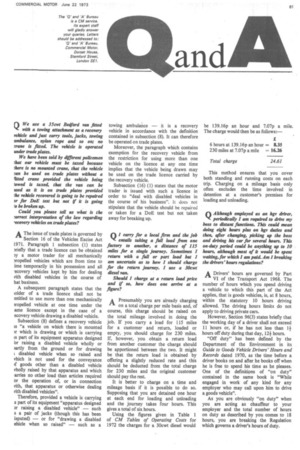Q carry for a local Pm and the job entails taking
Page 63

If you've noticed an error in this article please click here to report it so we can fix it.
a full load from one factory to another, a distance of 115 miles for a single journey. Sometimes 1 return with a full or part load but I am uncertain as to how I should charge for the return journey. I use a 30cwt diesel van.
Should I charge at a return load price and if so, how does one arrive at a figure?
A Presumably you are already charging I-1on a total charge per mile basis and, of course, this charge should be raised on the total mileage involved in doing the job. If you carry a load for 115 miles for a customer and return, loaded or empty, you should charge for 230 miles. If, however, you obtain a return load from another customer the charge should be apportioned between the two. It might be that the return load is obtained by offering a slightly reduced rate and this should be deducted from the total charge for 230 miles and the original customer should pay the rest.
It is better to charge on a time and mileage basis if it is possible to do so. Supposing that you are detained one hour at each end for loading and unloading and the journey takes four hours. This gives a total of six hours.
Using the figures given in Table 1 of CM Tables of Operating Costs for 1972 the charges for a 30cwt diesel would be 139.16p an hour and 7.0'7p a mile. The charge would then be as follows:— 6 hours at 139.16p an hour = 8.35 230 miles at 7.07p a mile — 16.26 Total charge 24.61 This method ensures that you cover both standing and running costs on each trip. Charging on a mileage basis only often excludes the time involved in detention at a customer's premises for loading and unloading.




















































































































